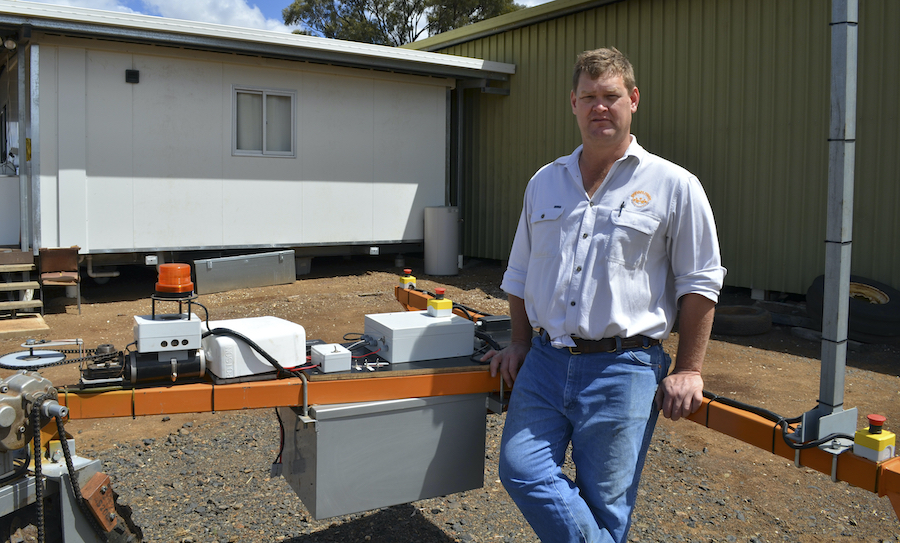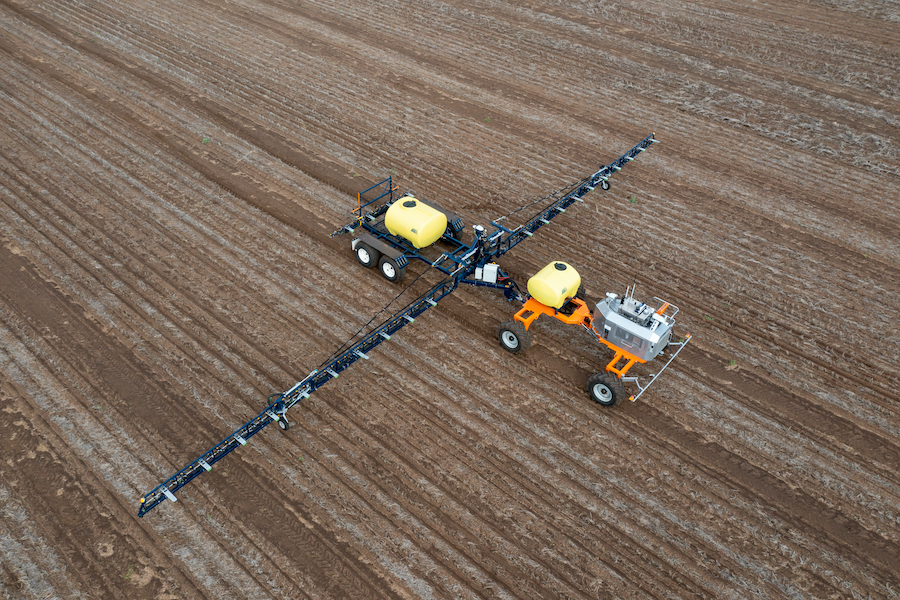SwarmFarm Robotics has previously developed lightweight robotic vehicles and software that can autonomously perform controlled-traffic farming practices. The company’s development strategy is to partner with farm equipment manufacturers to help develop add-on technologies, such as sprayers, weed detection cameras, spreaders and mowers.

Andrew Bate is co-founder of SwarmFarm Robotics. Photo: GRDC
To date, six manufacturers of boomspray technologies have worked with SwarmFarm to commercialise spraying rigs for autonomous robots.
Now, the company is targeting the development of non-chemical weed-killing accessories for its robotics platform.
A co-founder of SwarmFarm Robotics, Andrew Bate, notes that current non-chemical weed-kill methods essentially mean ploughing, which is not an option for most no-till systems. To help extend the mechanical options, he says the company is investigating in developing five weed-kill mechanisms and is prepared to scour the globe for technology partners for its robotic system.
He says the technology development being investigated is a weed detection system that allows for targeted action – only on weeds and only where it is needed.
The five mechanisms under consideration are:
- Heat-based technology, such as lasers, microwaves, steam and flame throwers (with due consideration to fire safety);
- Electrocution using targeted bolts of electricity;
- Mechanical action, such as chopping and digging;
- Sand blasting; and
- Freezing, using cryogenic technology.
Mr Bate says the technology does not need to be 100 per cent reliable at killing all the weeds with one pass. “With robotics that can autonomously detect and kill weeds, that action is repeatable throughout the season. That repeatability means even a mechanism that is just 60 per cent effective is in contention,” he says.
Additionally, robots move slowly, which makes it easier to work with alternative technologies that target individual weed plants.
The project started in July 2023 with investment from GRDC and the company is aiming to have its first non-chemical weed control integrations in the market in two years.
Already SwarmFarm Robotics is working with one partner to commercialise a mechanical spot-tillage product. Mr Bate says that so far, this technology is proving to be a practical solution with considerable market potential.
The company has also started work on two additional modes of action – the heat-based and electrocution mechanisms.
As they are developed, prototypes will undergo field trials in the northern and southern cropping zones, with field days planned to show the new technologies in action.
An additional option is the use of biological products that can be applied through a spray system. While no work on this is currently underway, the company is keeping an eye out for options that could be developed in the future. These include products that would be injected into the stem of weeds.
“When we explore for technology partners, we take into account companies that develop technology for other sectors, such as horticulture,” Mr Bate says. “We have a history of being able to see applications for external technology within broadacre cropping and we can help a company understand the market and develop a cropping application.”
Driving this is not a desire to automate farming, but to understand how robotics create opportunities to innovate farming practices in ways that enhance sustainability and productivity.
Already, Mr Bate has seen SwarmFarm’s robotics contribute to more-precise use of chemicals and the next step, he says, is to expand that capability of robotics by adding non-chemical weed kill options.
GRDC’s manager for transformational technologies, Liam Ryan, says that having non-chemical autonomous weed control options in the mix will also complement the work led by the Australian Herbicide Resistance Initiative and others within GRDC’s integrated portfolio of site-specific weed management projects.
“When we can anticipate weed behaviour over time and generate workflows that use that modelling to anticipate weed population and herbicide resistance dynamics, we can better target problematic hot spots,” he says.
The SwarmFarm robotic system

SwarmFarm’s automated precision agriculture machinery with Hayes 24m sprayer boom. Photo: SwarmFarm
Designed to automate controlled-traffic farming, the SwarmFarm technology platform is modular in nature, allowing for a range of robots with wheel centres that include 1.6, two, three and four metres. They weigh just 2.5 tonnes, much less than a tractor, which helps reduce soil compaction.
The technology interface includes a smartphone app and the robots can work 24 hours a day unsupervised.
Half a dozen boomspray manufacturers now build equipment adapted to work with these robots. Included are boomsprays measuring from nine to 27m and with 3000-litre tanks.
The robotics are also fully integrated with a range of commercial weed detection systems, including WEED-IT, WeedSeek® and Bilberry.
To date in Australia, fleets of SwarmFarm robots have covered the equivalent of 1.4 million hectares.
More information: Andrew Bate, andrew@swarmfarm.com

























































